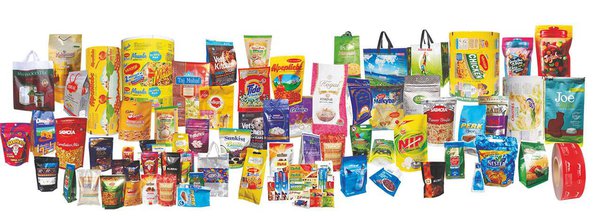Over the past few years, packaging as a category has changed tremendously. Demand growth fuelled by developing economies as well as by the growth in e-commerce, shift towards green and sustainable packaging, significant volatility in the raw material availability and prices, are some of the key trends that have shaped the narrative in this industry.
At a high level, packaging can be primarily categorised into two key sub-categories:
- Rigid Packaging: This comprises plastic boxes, cardboard, corrugate boxes, glass etc. Such materials do not bend and don’t change shape. The degree of protection is higher however these are bulkier and more expensive than the flexible packaging.
- Flexible Packaging: Flexible packaging is packaging made from plastic polymers or a blend of materials such as (coated) paperboard, foil, and paper. As the name suggests, it can bend and uses less material.

Image source: Quora.com
In this article, we give an overview on some of the key sourcing levers that Enabling Procurement team regularly deploys in addressing flexible packaging category for our clients:
A. Standardisation of specification
This category is highly sensitive to the economies of scale as there are significant change over costs in the production process. Analysing the order book of last 12 months to look for standardisation opportunities across the size, shape, and the material to enable large production runs is a good starting point.
B. Vendor managed inventory
In the absence of a proper demand forecasting process, clients hesitate to order larger quantities as ill-planned forecasting may result in increased inventory costs. To mitigate this challenge, many vendors in this market are used to building vendor managed inventory solutions. The most common duration of VMI ranges anywhere between 90 to 120 days
C. Optimising contracts
Using index-based is a good practise for this category given the significant volatility in the raw material prices. Typical indices used in this category are those that track the fluctuations of PE & PET. For PE, the most used indices are CDI (Chemical Data) Index, ICIS (Chem Data), and IHS Markit (CMAI). It is also common practise in this industry to put in OTIF (On Time In Full) penalties. We usually see penalty ranges between 1-3% of the total sales volume.
D. Value chain optimisation
Flexible packaging market has suppliers who are operating across different parts of value chain. While on one side, we have distributors who buy the film in roll-stock from a polymer manufacturer and then customize it, on the other hand, we have fully vertically integrated vendors who produce their own polymer, and also have manufacturing capability to produce films and do custom printing. Buying from vertically integrated manufacturer can remove the added layer of cost, provide better lead time, and reduce risk of raw material unavailability with the vendor.
E. Material type optimisation
Plastic polymers are of various types including High-Density Polyethylene (HDPE), Low-Density Polyethylene (LDPE), Linear Low-Density Polyethylene (LLDPE) Polystyrene (PS), Polyvinyl Chloride (PVC, Vinyl), Polyethylene Terephthalate (PET, PETE) and Polypropylene (PP). LLDPE is the most used polymer due to its flexibility, transparency, and cost effectiveness. It is more pliable and softer, most often from 0.5 mil thick to about 40 mil in flexible sheeting forms. If the requirements are standard, and the packaging does not require any barrier, LLDPE is often found to be a cost-effective solution
F. Optimising the number of layers
Cost of the packaging increases with the number of layers. Standard plastic packaging/film has two layers; the outer layer is typically made up of Polyester (PET) and the inner layer is made up of Polythene (PE). But in some cases, the film may be required to have 3 or more layers. This may be because of the requirement of additional properties e.g., barrier, that helps protect the content inside (films used for chocolates use barrier to protect chocolates from discolouration due to light). We have encountered several situations where incumbent suppliers have over specified the number of layers used in our clients’ packaging requirement. Detailed discussion with a panel of suppliers can help understand the optimal solution for you.
G. Printing technique and number of colours
In flexibles, the cost of printing the film has significant impact on the overall price of the packaging. Number and type of colours used in the printing has direct effect on the printing cost. Also, the type of printing machine that your supplier has also dictates the unit costs. For any pilot project or sample printing where quantity is lesser than 15000, Digital printing capability proves economical. Whereas, for more than 15000 SKUs flexographic printing is more efficient.
H. Competition
Given the commoditised nature of the product, a high degree of competition in the market and rapidly evolving supplier and technology landscape, we regularly find 10% to 20% savings in this category across our RFP based interventions.
At Enabling Procurement, we regularly work with consumer and retail industry clients, and packaging is a frequently visited category by our experts in these (and other) industries. Most of our packaging cost optimisation initiatives involve using a combination of the above-mentioned techniques. We conduct detailed RFPs in the market on behalf of our clients as RFP tends to be a good vehicle to leverage latest market intelligence on all the above topics.
Would you like to know more about our expertise? Our colleagues would be delighted to share our insights and discuss your challenge.
